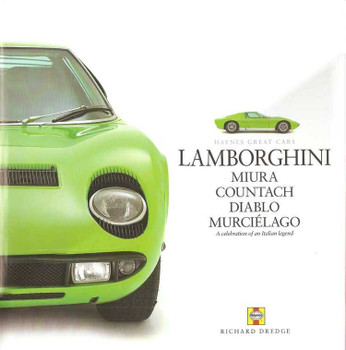Description
By: Peter Coltrin, Jean-Francois Marchet .
Back in 1966 the supercar didn't really exist - until the Miura. Before it there were more simply high performance Gran Turismo and sports cars.
In that year the rich high speed driver could choose from Jaguar's 4.2 E type, Ferrari's 275GTB/4, Aston Martin's DBMS, Maserati's Mistral and a small number of either esoteric or less expensive cars such as the Porsche 911 S.
Apart from the 2 litre Porsche and perhaps its closest rival the Ferrari Dino 206GT, the 'big muscle' was front engined, handsome in the main but conventionally styled and not too radically conceived in any respect.
Ferrari's engine was, of course, a V12 then with four cams - the other three straight sixes with twin cams to boot. Nothing too sensational, nothing to turn the head on Fifth Avenue or the Champs Elysees, not by 1966 that is. Then came the Miura. Not only was the 'upstart' Lamborghini company offering a new car so soon after its baptism with the 350GT in 1964, but it was offering something so radical, so outrageous and doing it so seriously. Low, swoopy, cunning with a mid-mounted, transversely slung V12 under the rear window. Nothing like it had been seen before.
It was the first supercar; a car on a different plane from those that had preceded it. The Miura might be described as the most significant production GT of that decade. From then on all had to follow. ![]()


















